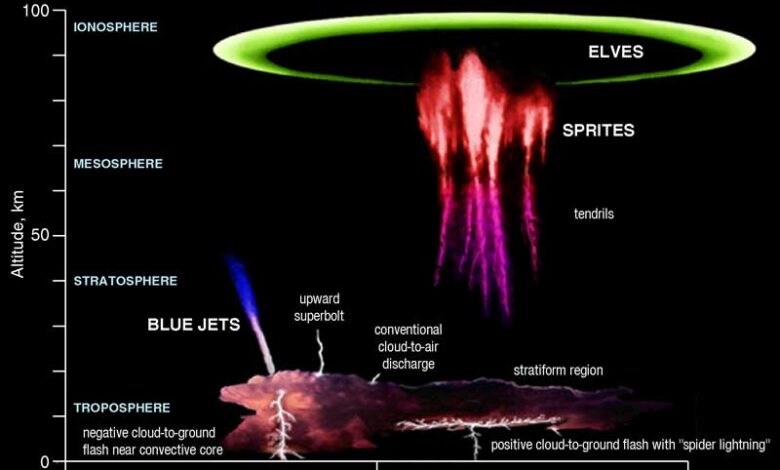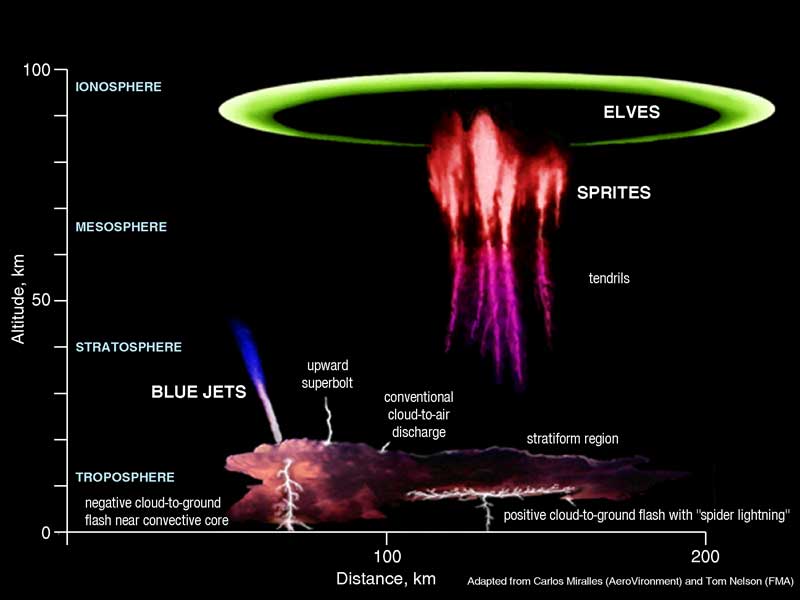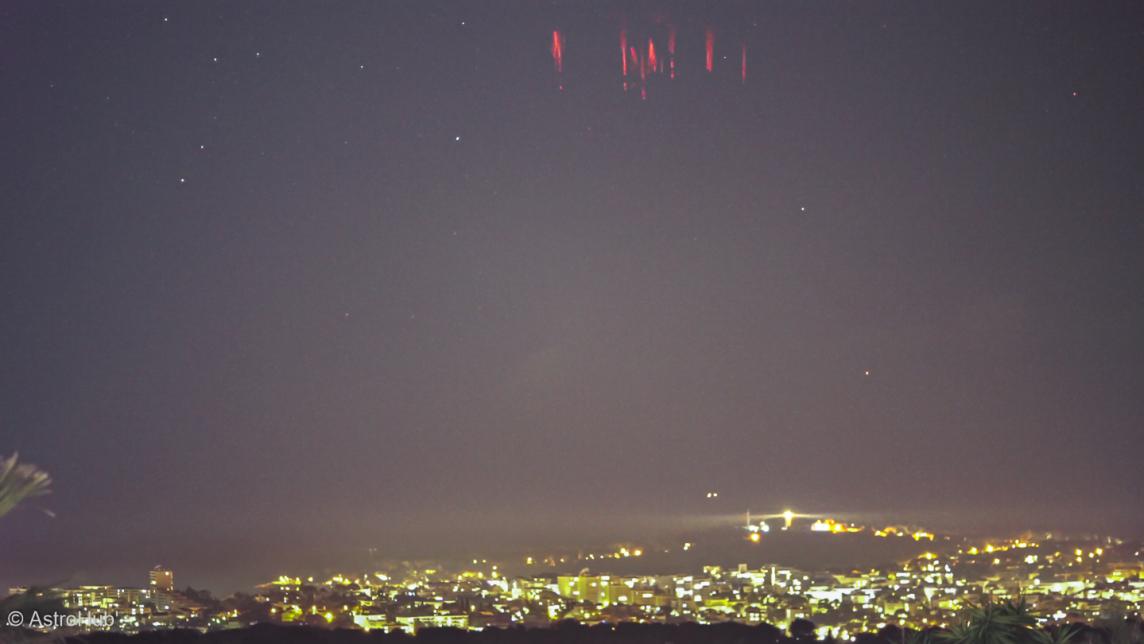Scientists finally find mysterious mesospheric ghosts

Sign up for the Smarter Faster newsletter
A weekly newsletter featuring the biggest ideas from the smartest people
On a spring night in 2019, in the bowels of Tornado Alley, nature documentarian Hank Schyma was out photographing a storm when he captured something mysterious. A “ghost,” but not of the paranormal sort. In the distance, this specter appeared as a faint green blob over a red flash of light.
The red flash was familiar to Schyma, a savvy citizen scientist. The technical name for it is a sprite, an electrical discharge that occurs in the upper atmosphere during intense thunderstorms, glowing red in the sky because of excited nitrogen molecules in the air. He happened to be out looking for this exact phenomenon and other forms of upper-atmosphere “lightning” known as transient luminous events (TLEs) that night.
“Multiple vibrant red sprites and a couple secondary jets were captured with great excitement,” Schyma recalls. A blue jet is another type of TLE that appears as a spray of cerulean light aimed upward. “Upon reviewing the footage later that night and the next morning, I noticed a green afterglow proceeding two of the larger red sprite events. On video, the green appeared to be a faint aurora lasting about a second.” Schyma says he’d never seen or heard of such a thing, so he called up self-described sprite chaser Paul Smith, who Schyma deems a “TLE expert.”
Together, they named it the “green ghost,” with “ghost” being a close-enough backronym for “Green excitation of Oxygen in Sprite Tops,” which was Smith’s initial hypothesis. The discovery piqued the interest of astrophysicists abroad, who spent the following four years trying to document the foggy blob and figure out what causes it. Finally, they found a green ghost.
“The connection with green ghosts and asteroid dust is interesting.”
According to their research, published in the journal “Nature Communications” on December 12, 2023, these rare mesospheric emissions require a cocktail of atmospheric conditions or, one might say, the perfect storm. There is excited atomic oxygen, as Smith suggested, but the study found that various metal ions were also present, including some that came from asteroids.

Upper-atmospheric lightning and electrical-discharge phenomena. Green ghosts appear in the footprint of a red sprite. (Wikimedia / public domain)
“The connection with green ghosts and asteroid dust is interesting, but I am not surprised,” says Thomas Ashcraft, a NASA Citizen Scientist who runs an observatory in New Mexico. Ashcraft says he documented a green ghost years before Schyma’s discovery, but chalked it up to “common green air glow.” He credits Schyma’s keen eye for recognizing its significance and ultimately inspiring the research campaign that followed.
To investigate the mysterious emission, the authors of the study, led by María Passas-Varo of the Institute of Astrophysics of Andalusia, aimed a spectrograph at the sky above Castellgalí, in Spain’s Catalonia region. Over four years, they recorded 42 sprites, and only one of them produced a green ghost.
The U.S. Great Plains are “notorious for their large quantities of sprites.”
The instance occurred in September 2019 over a jellyfish sprite, named for its characteristic tentacles of red light, just as it did when Schyma observed it in Oklahoma months before. It turns out amateur green ghost hunters have had much more success in finding the phenomenon than the researchers. Ashcraft has documented the specter about 15 times and Schyma 25 times since his initial 2019 encounter.
“I chase storms pretty much all year. Though I’ve documented TLEs in Argentina and Thailand, it’s hard to compete with the high frequency of monster storm complexes here in the United States,” says Schyma.
Dr. Oscar van der Velde, one of the authors of the study, says the U.S. Great Plains are “notorious for their large quantities of sprites.”

He also says one reason why the study in Spain only recorded one green ghost could additionally come down to methodology. “The spectrograph works with a slit which must be aimed manually exactly to the right altitude of the sprite top. And then, many regular sprites do not display any ghost, only the tallest and brightest ones.” In short, operating a spectrograph is much different than pointing a DSLR at the sky.
Ashcraft says that although he’s documented more than a dozen green ghosts, he’s never seen one with the naked eye. “A person with acute vision should be able to see a green ghost, since they take a little longer to quench before they disappear,” he says. But the ghost appears only once out of every 100 sprites, and a sprite lasts just a few milliseconds. In other words, most of us don’t stand a chance without a decent camera or telescope—and a lot of luck.
This article originally appeared on Atlas Obscura, the definitive guide to the world’s hidden wonder. Sign up for Atlas Obscura’s newsletter.
Sign up for the Smarter Faster newsletter
A weekly newsletter featuring the biggest ideas from the smartest people




